Wetpixel coverage: DEMA 2014
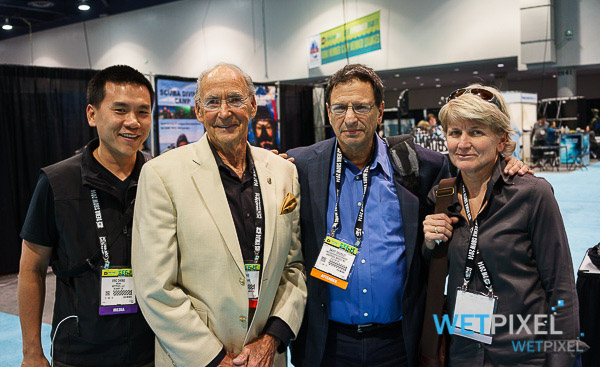
DEMA Show 2014
Day 4
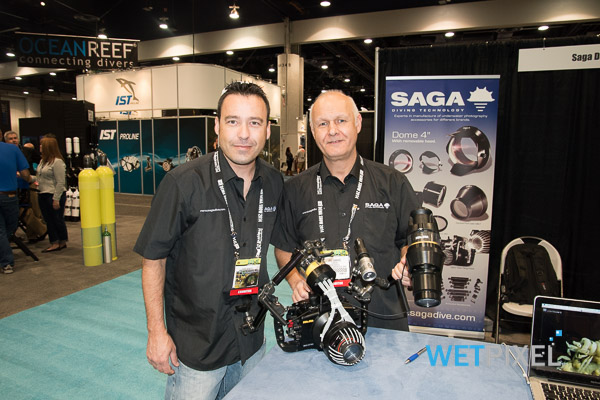
Saga
I started my final day at the DEMA show with a visit to Saga. The company specializes in making custom accessories and tools for underwater imaging. Jordi Benitez and Jose Sanchez Garrido showed me through the products that they were showing.
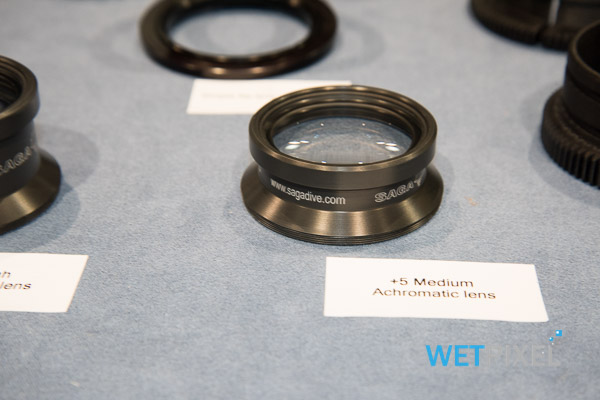
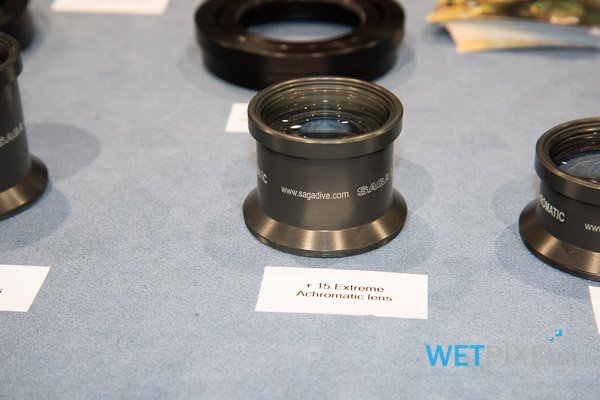
They offer a range of macro diopters from +5 to +25 (in water). The +25 is for use with compact cameras only. They all have 67mm threads, but are narrow at the front end, so that it is easier to light subjects and to allow them to get closer to the ground when shooting on a flat surface.
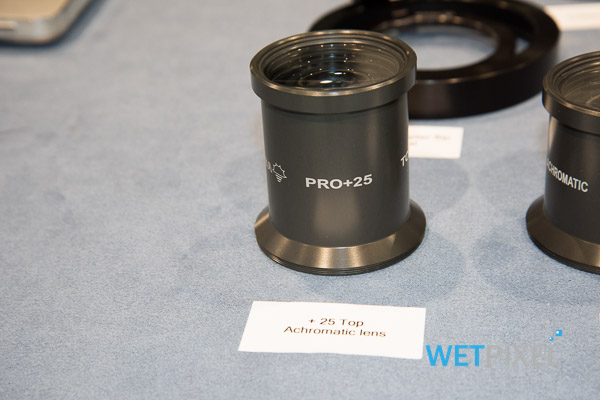
A press fit stacking ring with an M67 thread is available if required.
The diopters are sealed into a vacuum and use achromatic lenses with anti-reflective and anti-scratch coated glass.

Saga also offer a wide range of flip lens holders. These are available with push fit and M67 screw fit, to suit different manufacturer’s ports, and can have one, two or three “flips”.
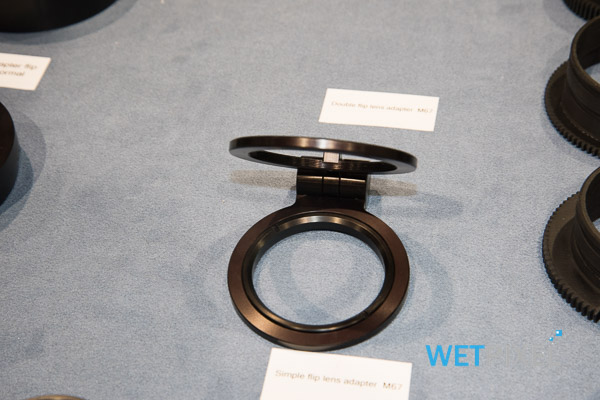
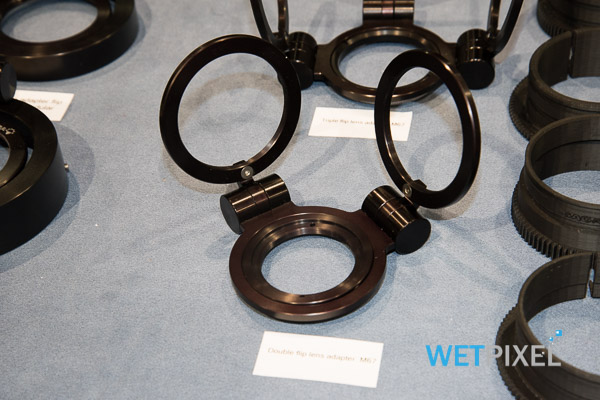

This is particularly useful with compact cameras as it could carry a filter, wide-angle conversion lens and a macro diopter.
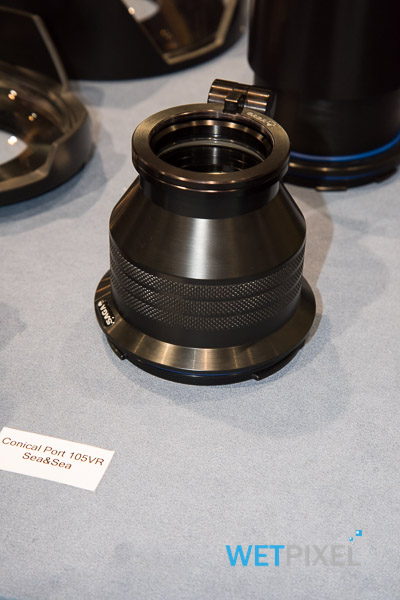
They also have both macro and dome ports. Saga manufactures macro ports for all housings, and offer an innovative version that will screw out, effectively extending its length.
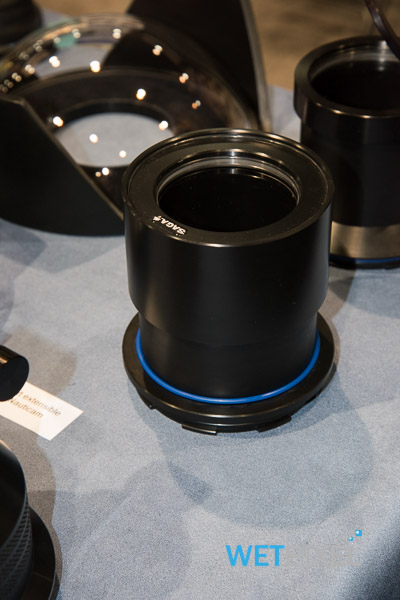
This allows one port to be used, without extensions, for a 60mm or a 105mm with a teleconverter!
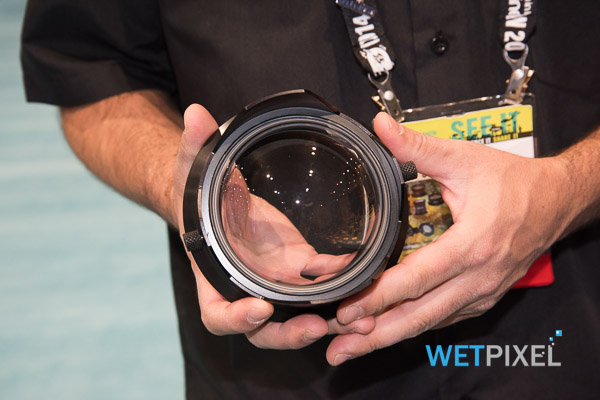
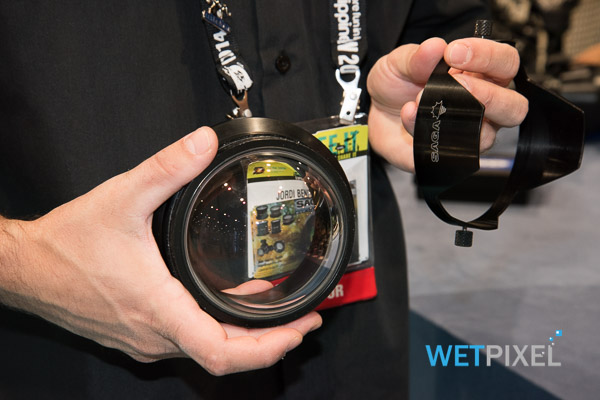
There are also three sizes of dome port, 4”, 6.5” and 9”.
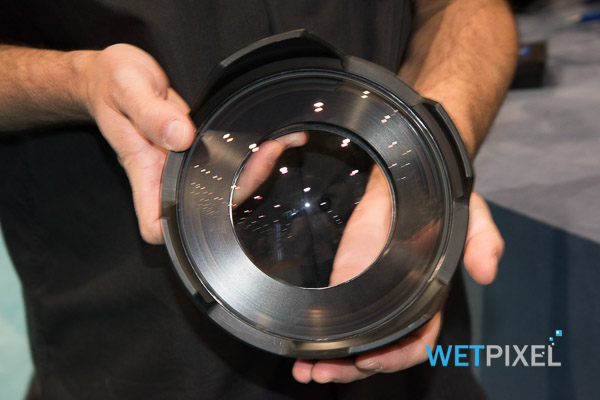
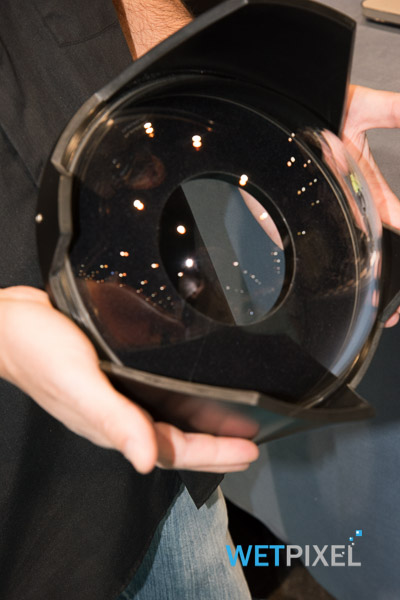
All are made of glass and feature anti-reflective and anti-scratch coatings inside and out. The 4” and the 6.5” also have removable shades. The 9” has a velvet internal lining to prevent reflections.
Saga had a range of 3D printed zoom and focus gears on their stand. These are made by a third party, but can be purchased through Saga if required.
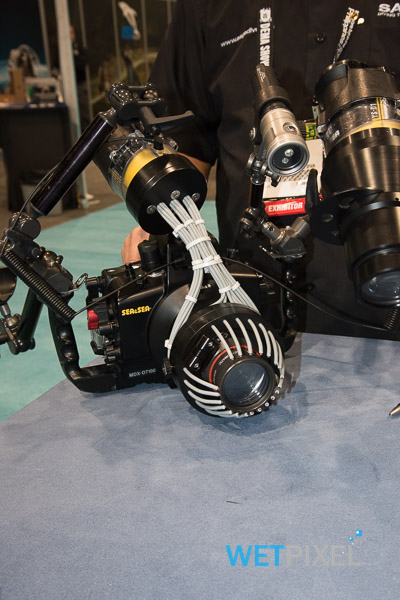
Uniquely, they offer two types of ring flash. The larger one is for use with an SLR and attaches to a strobe (saga can offer a solution for any strobe type). The light is directed via fiber optic through a bracket around the port that arranges them into a ring. Moving the bracket controls how close to the port the fibers lie.
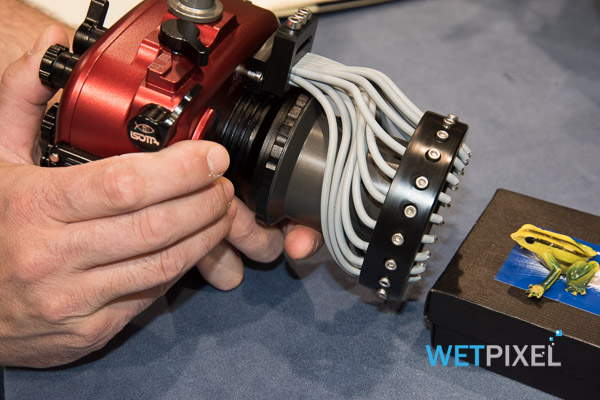
The second version is designed for compact cameras fitted with a macro conversion lens. It also only works with housings that can use the camera’s internal flash.
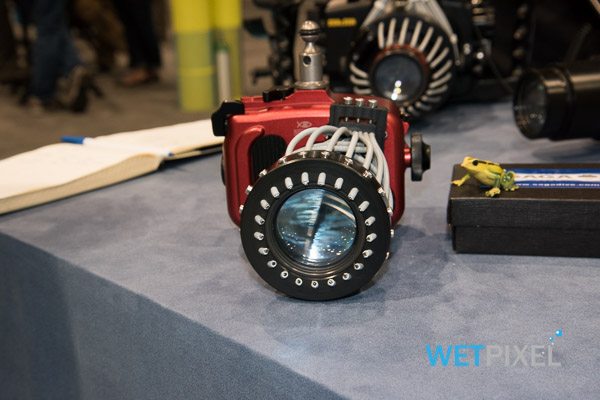
The version on display is designed for the Isotta housing for the Canon S120, but Jordi and Jose said that they plan to expand the range to cater for the Panasonic LX100.
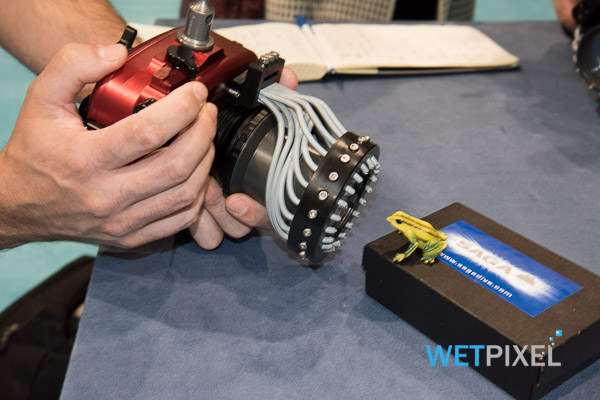
Ring flashes provide soft even lighting for macro subjects, even if the subject is very close to the port. Optimum results are obtained if the port to subject distance is between 3-10cm (1” to 4”).
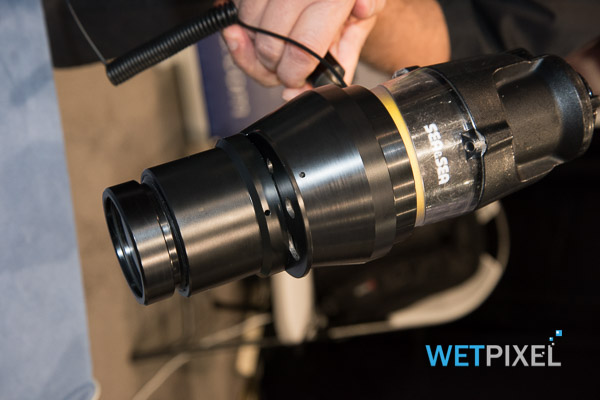
Also on display was a snoot. This contains both fiber and lenses and features variable apertures and a screw that allows focusing (or de-focusing) the beam. One strand of fiber strands provides illumination to the apertures so that the correct size can be selected. Saga can offer support for any strobe.

Saga produce a range of arms and clamps. The clamps feature a clever “ratcheting” handle.
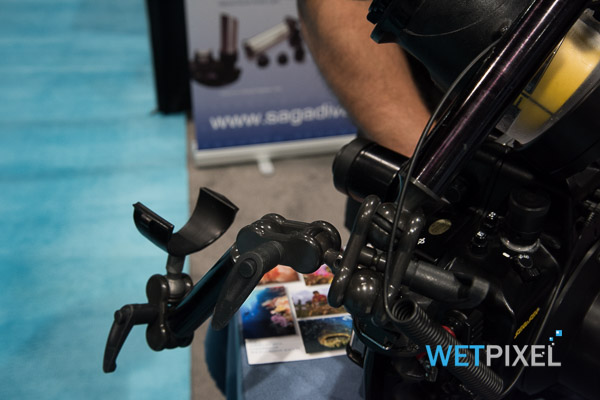
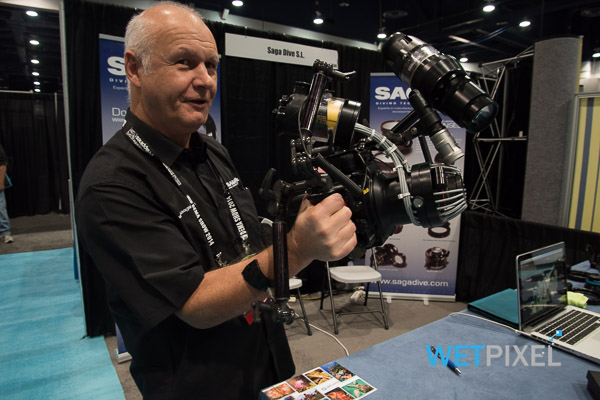
Lastly, if you suffer from wrist strain when shooting macro, they offer a supportive arm brace that can be used to help support the weight of the camera.
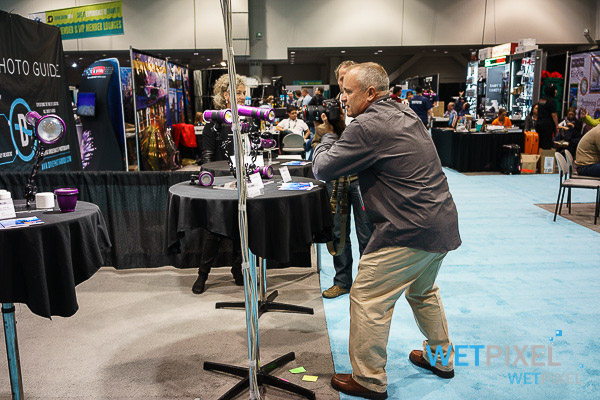
Ultralight Control Systems
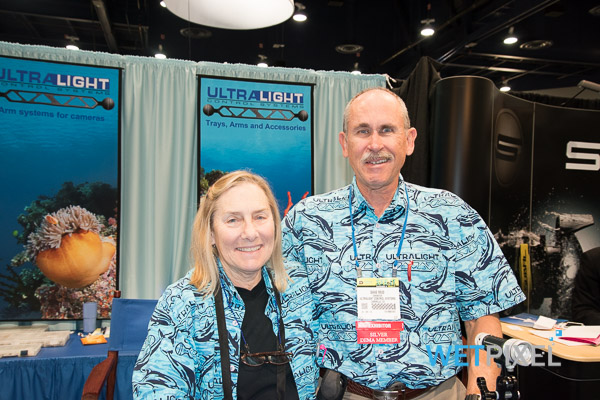
It was great to see Terry Schuller and Dave Reid on their stand, the last time I saw them was on the Wetpixel Whale Sharks trip in the summer.
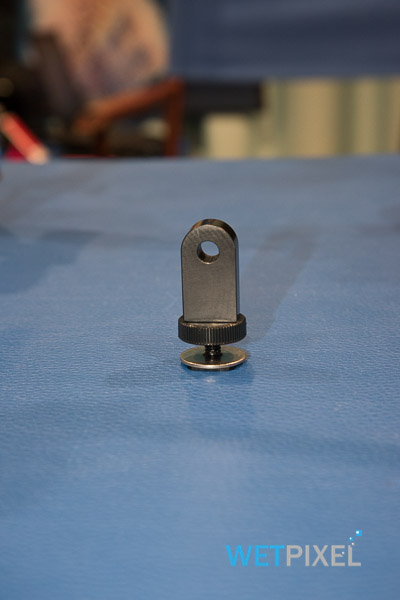

New for this year is a hot shoe to YS mount adapter, ideal for adding lights or small strobes, particularly on compact cameras that have few mounting options.
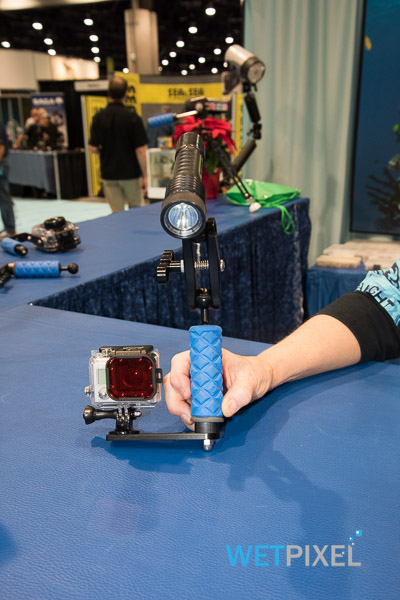
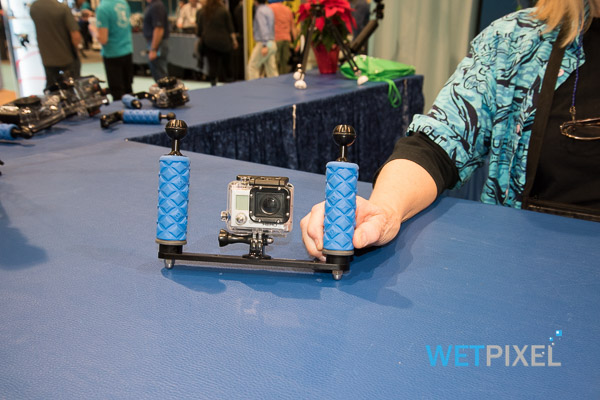
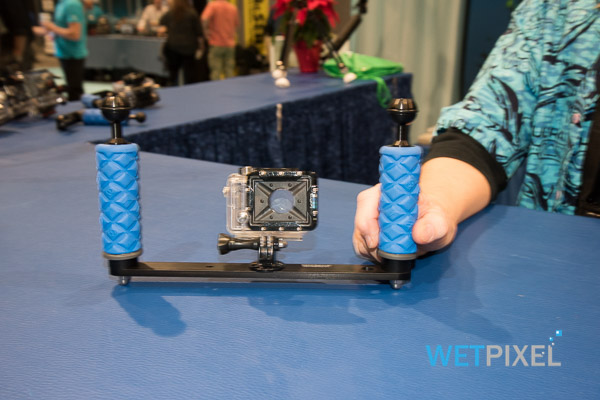
ULCS has had a very good year with their GoPro trays. they offer a simple one handed version, and medium two handled and a large two handled version that was originally designed for the 3D housing.
Terry told me that they are redesigning their GoPro cage so that it will work with the new HERO3+ and HERO4 housing.
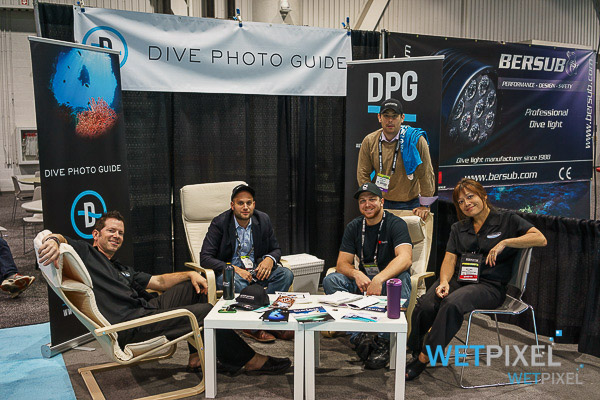
Aquatica
I revisited the company’s stand as their new monitor had arrived.
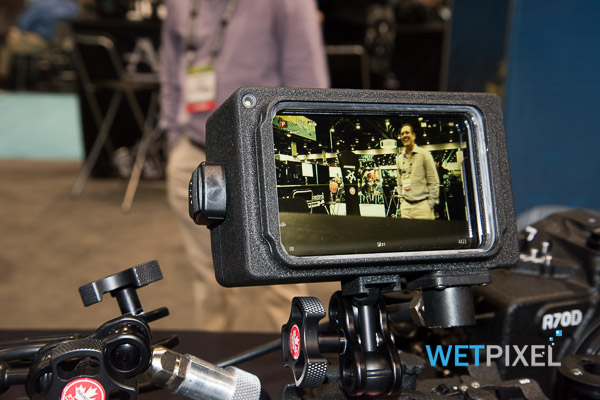
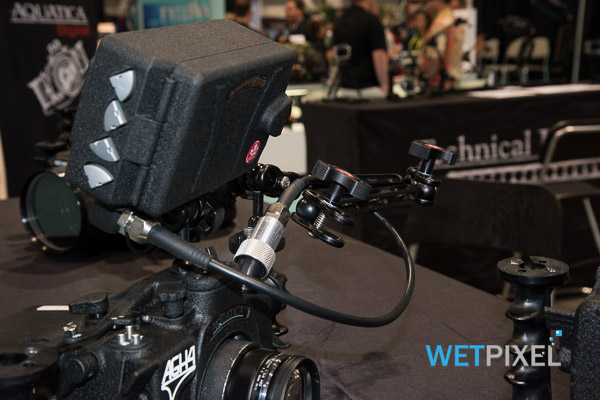
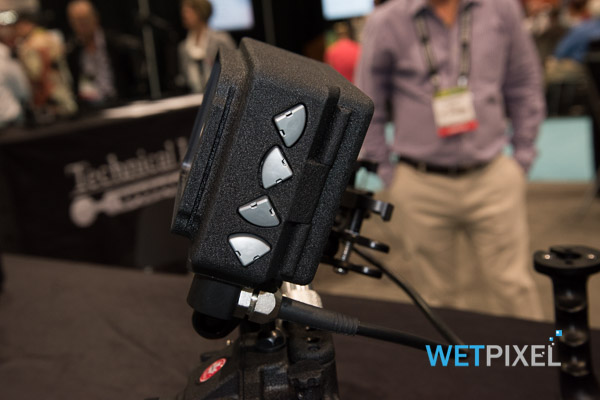
It is a 5.6” IPS HD monitor which gives 2 to 4 hours of burn time from a LiOn 8650 battery. It will ship with 2 batteries and a charger as standard. The bulkhead on the housing is specially designed to run at a 45° angle - to improve clearance.

BS Kinetics
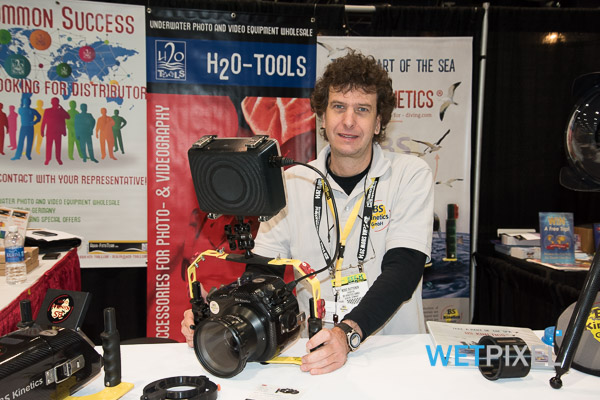
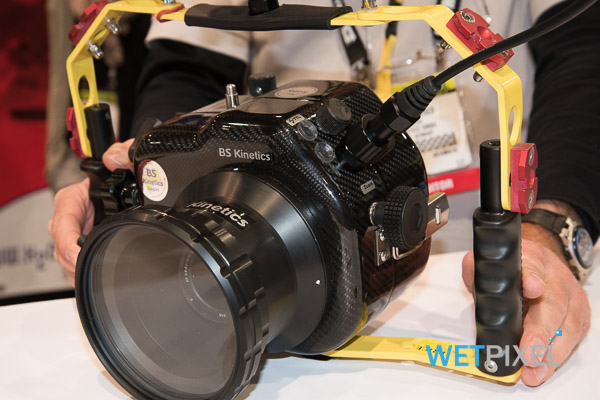
Bodo Sutterer showed me his new housing for the Sony a77 MkII camera.
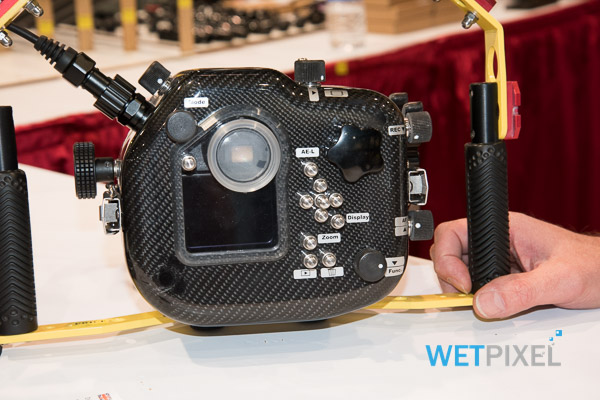
Constructed of his trademark carbon fiber, it gives access to all camera controls.
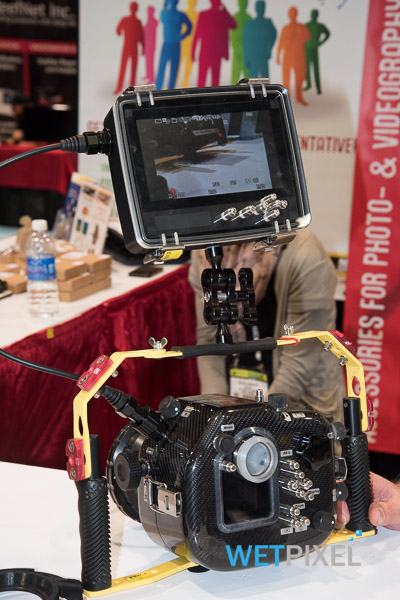
Bodo also had a new monitor. It is a 7” version with HDMI in and out, peaking and zebra. It is powered by a standard 12V battery pack and will retail at between 8-900 euros.
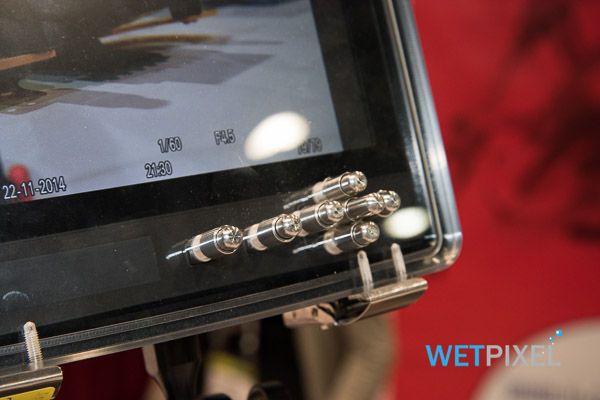
BS Kinetics also has a housing for the Blackmagic Cinema camera.
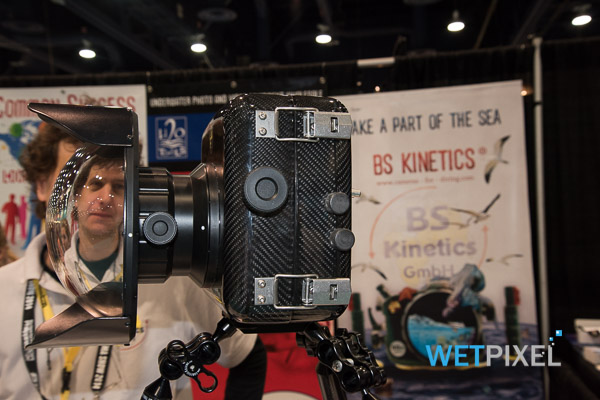
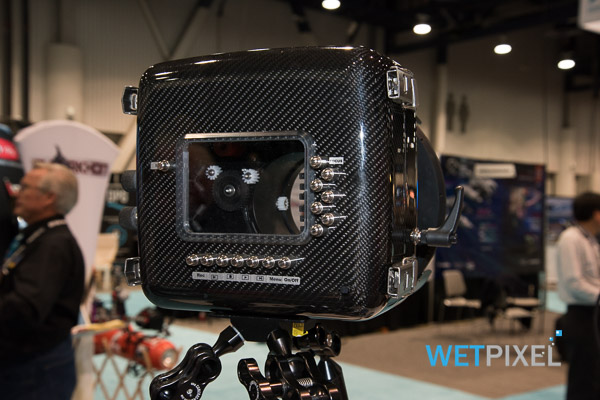
BS Kinetics plans to support the Sony A7 as well as the Atomos and Convergent designs monitor recorders. These new designs will be available at the BOOT show in January.
Fantasea
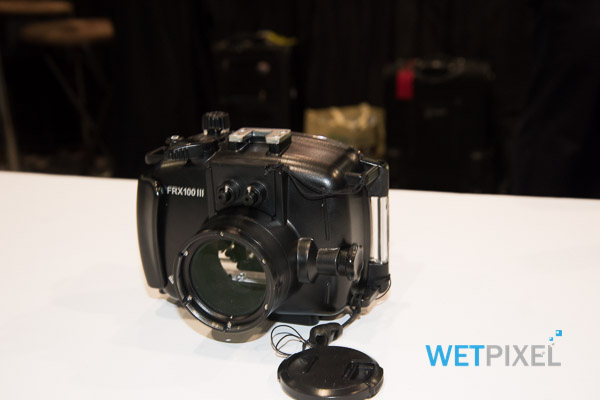
Ran Vered showed me Fanatsea’s new housing for the Sony RX100 MkIII.
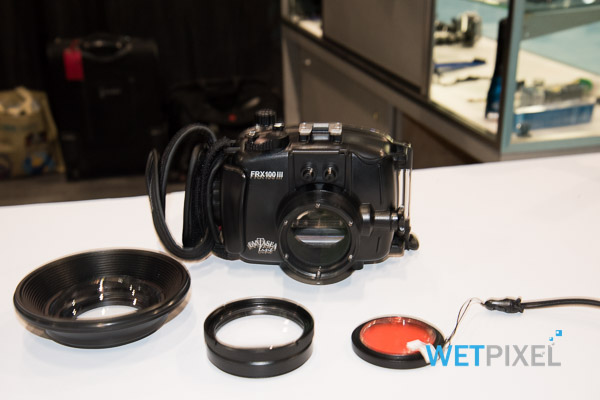
As is typical of the company’s housings, it gives access to significantly more controls than the UN style housings for cameras of this type. It also incorporates a leak detector and there is a full range of accessories available. It retails at $549.95.
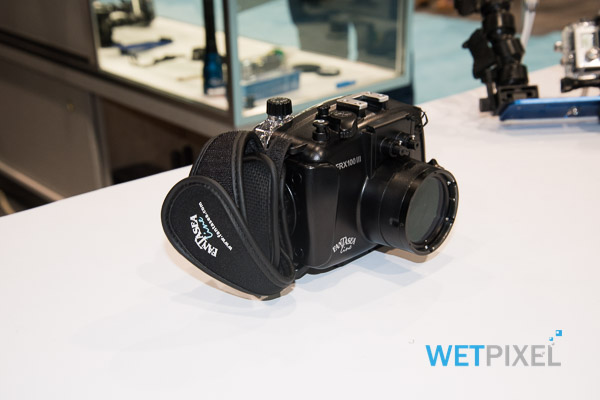
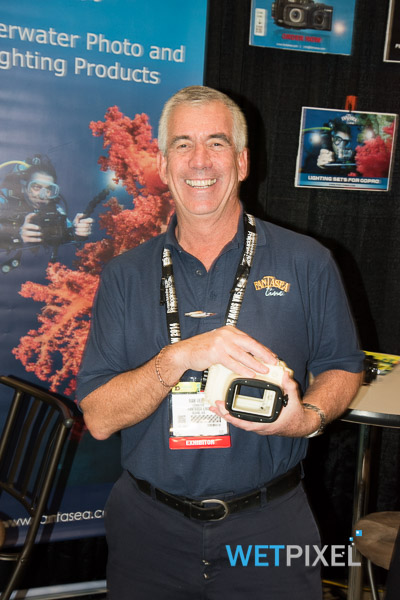
Ran also had an early prototype of the company’s forthcoming housing for the Canon G7X on the stand. We will post details of this as they become available.

OrcaLight
As mentioned in our first day’s coverage, Backscatter were showing the UK based company’s products, but owner Shane Newman also had a booth at the show.
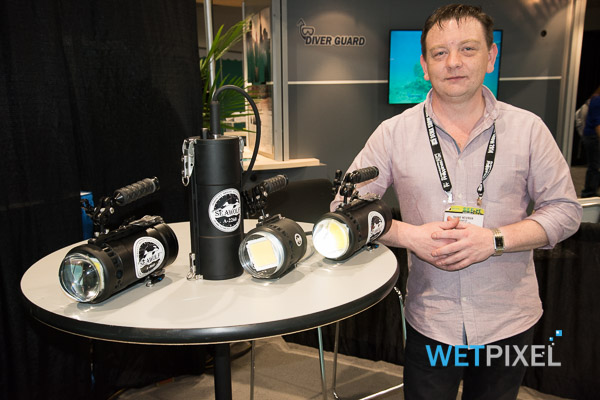
Shane’s engineering background has meant that he has set out to provide some unique solutions.

For example, in order to provide a good seal and to provide strain relief on the canister the Orcalight 2260A, he has sourced a insulation rubber that can bond permanently to the metal. However, this would not then bond onto conventional cable insulation. Hence, he ordered cable made with the same material, so that the two would bond.
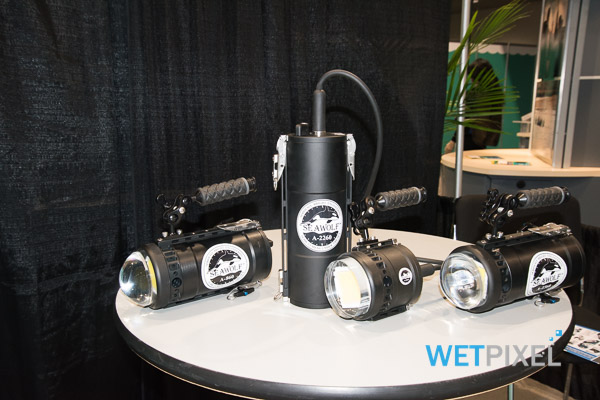
The lights can be run from a 36-28V DC surface power supply, making for the possibility of building large lighting banks in places where access to surface power exists.
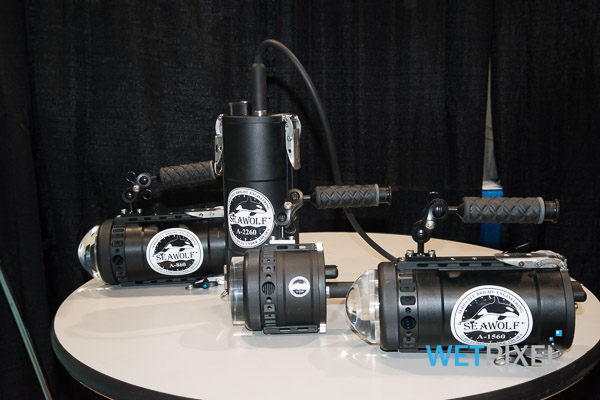
Shane prefers to refer to the wavelength of light that is put out, rather than the color temperature. He can provide light heads at at any frequency as required by the customer. Similarly, he can provide light heads with a higher CRI, albeit at the cost of output. Shane was at pains to point out that his lights are being used around the globe and are capable of dealing with the hard (ab)use meted out in a professional situation.
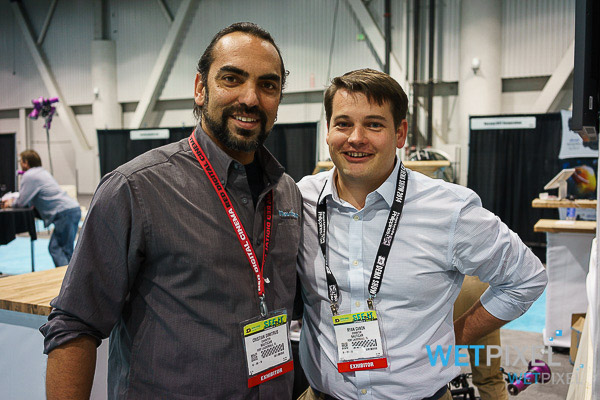
XIT404
Mike Elliot of XIT404 has designed and built a monitor hood for the Dive and see video monitors. The design neatly folds up flat when not in use and is currently available for the 5” version, with the 7” coming soon.
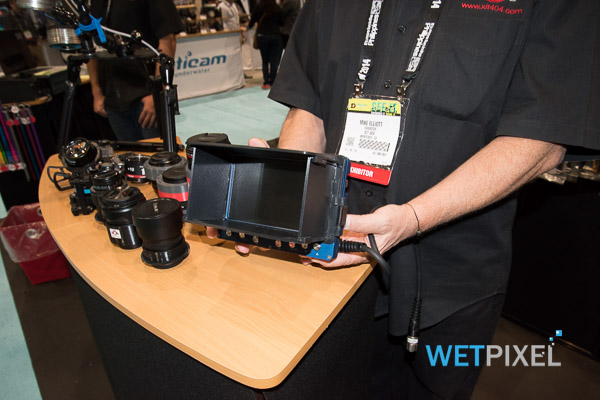
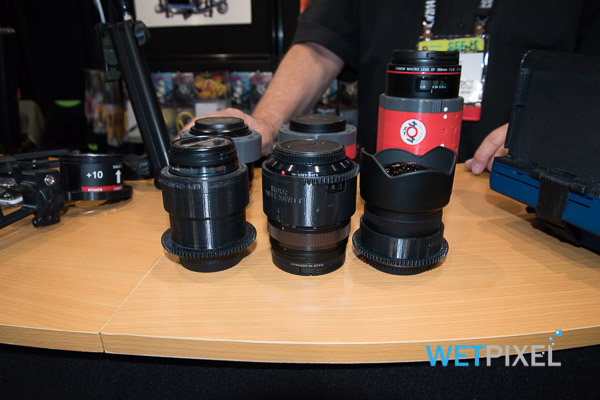
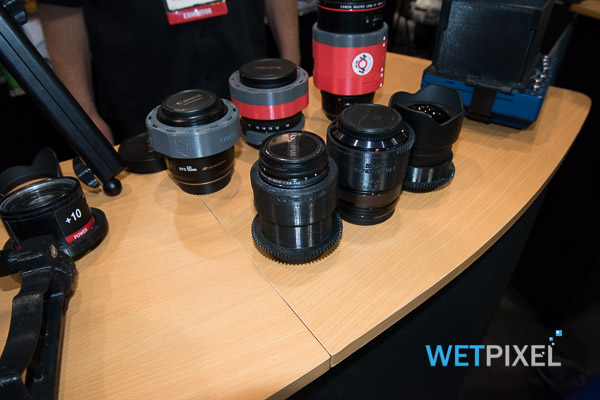
As announced at DEMA 2013 XIT404 now offers a range of zoom and focus gears for micro 4/3 cameras. These include ones for the 7-14mm, 12-24mm and 60mm macro, with support for Aquatica, and Nauticam housings currently.
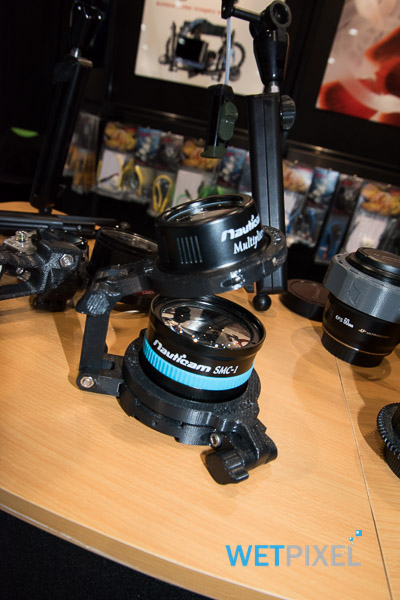
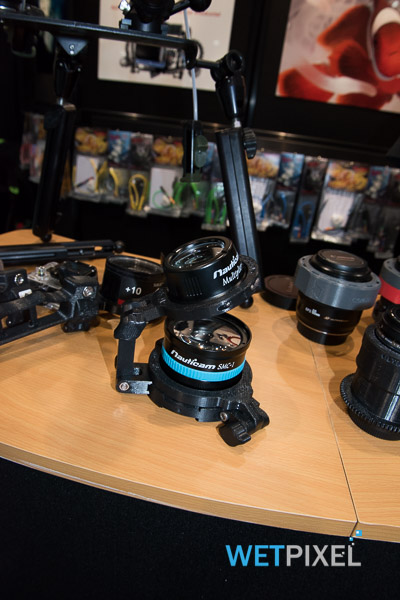
The last new product that XIT404 were showing was a stacking adapter compatible for use with the Nauticam SMC and Multiplier.

iDive
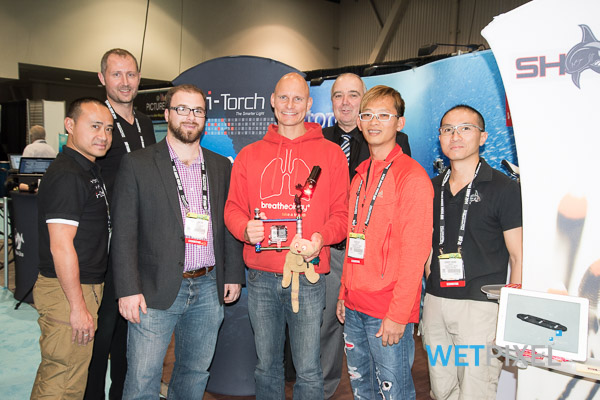
I joined Doug Taleski on the iDive booth.
As always, iDive has updated and re-vamped its range of video lights. Doug showed me the Venom C92. This has a 4000 lumen circuit-on-board LED with a color temperature of 5500°K with a a CRI of 92. It has 20 step adjustment on the light body, a red light mode and can be equipped with a fiber optic remote that will allow for 10 step adjustment. Beam angle is 120° in water and the light has a burn time of 1 hour at full power. It is modular, so additional battery packs can be purchased if required.
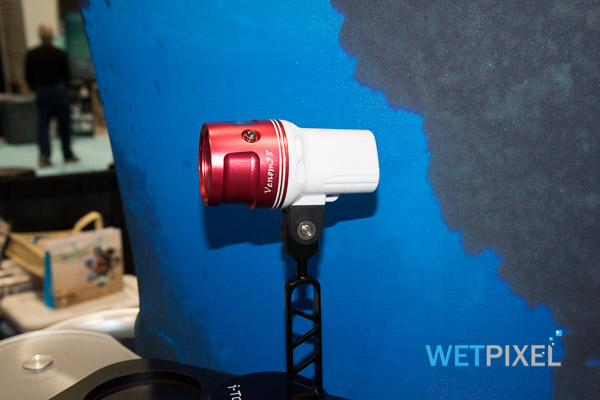
The Venom 38 offers 3800 lumen, via an LED array. The beam angle is also 120° in water and it has three light modes: White, red and blue (UV). Burn time is also 1 hour.
The Venom 35s offers both flood and spot modes. Its output is 3500 lumen and it also has a red light mod. It is powered by a 38W/hr LioN battery which also offers a burn time of one hour.
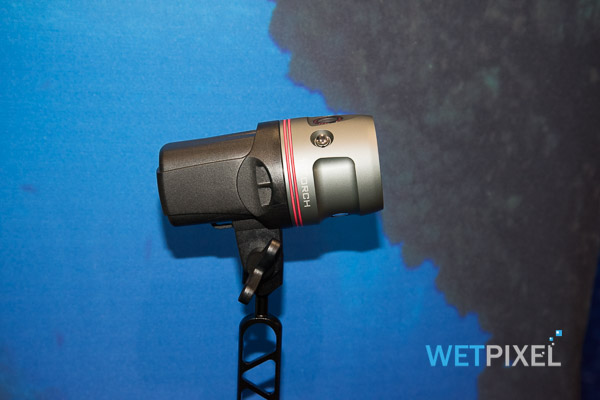
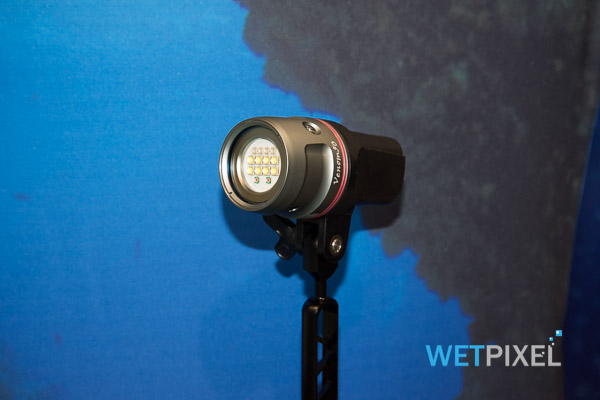
The most powerful light is the Venom 50. It has white, red and blue (UV) modes and offers 5000 lumen at full power in white mode. Color temperature is 5500°K through a 120° beam angle. It is adjustable in multi steps and similar to the C92, can be controlled via a fiber optic remote. In common with the rest of the range, it has a 1 hour burn time.

The Pro 6 has had an update to become the Pro 6 Plus. This offers 2800 lumen in its white mode, with red, blue (UV), and SOS modes available. It offers feedback as to output and remaining battery power via an LED surrounding the on/off button.
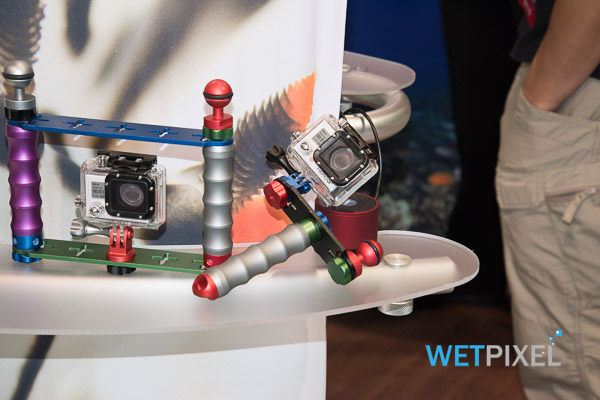
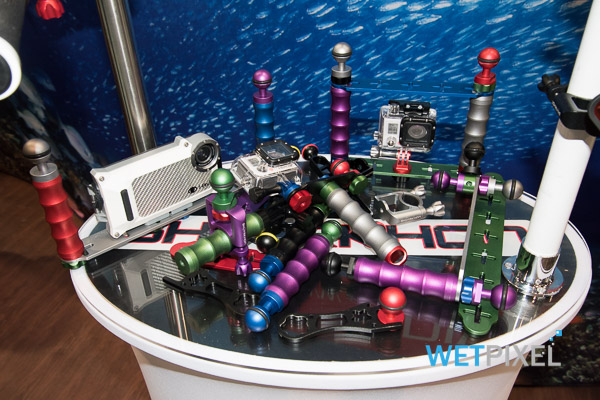
iDive has released a “build your own” set of components that allow users to build and customize tray and arm set ups. Perhaps unfairly, they have been labelled as being “Lego” or “Mecano”, but they would seem to offer a practical way to use single set of components in different ways for different applications or camera components.

Booth visits day 1: Backscatter, GoPro, Keldan, Ikelite, Subal.
Booth visits day 2: H20 Tools, 10 Bar, Seacam, PolarPro, Aquatica, Nauticam, Acquapazza.
Day 2: Wetpixel/DivePhotoGuide Underwater Imaging Party.
Booth visits day 3: New World Publications, Sea& Sea, Gates, Light & Motion, Watershot, Inon.
Booth visits day 4: Saga, ULCS, Aquatica, BS Kinetics, Fantasea, Orcalight, XIT404, iDive.
Mark Goyen: A newbie’s impression of DEMA.
Steve Williams: Final thoughts on DEMA 2014.
Adam Hanlon: Finishing thoughts and round up.